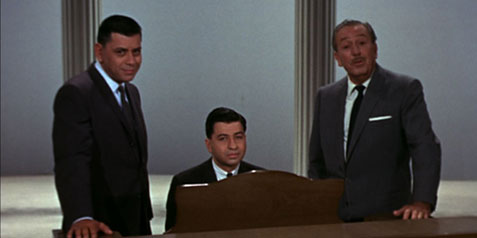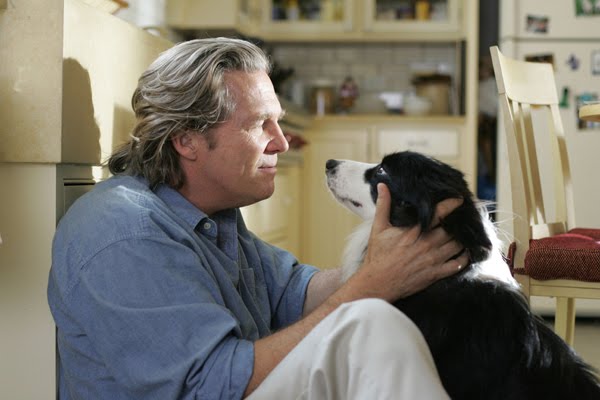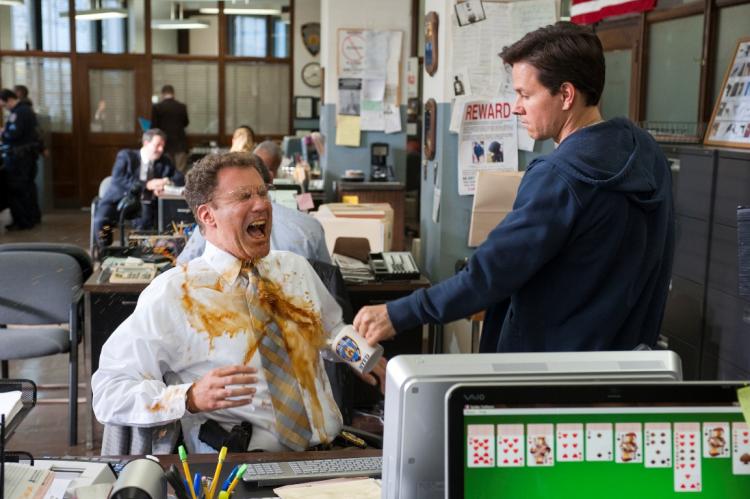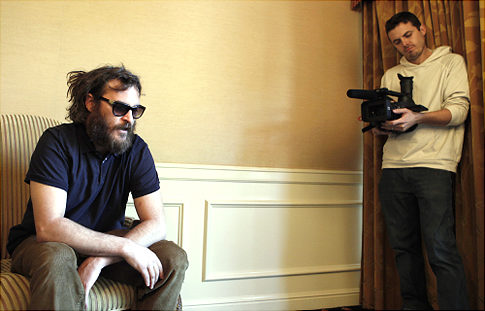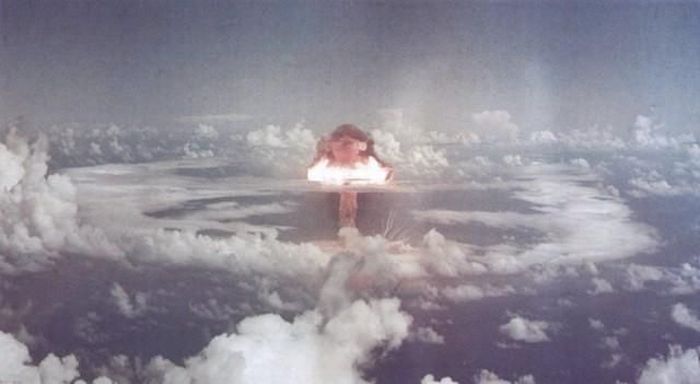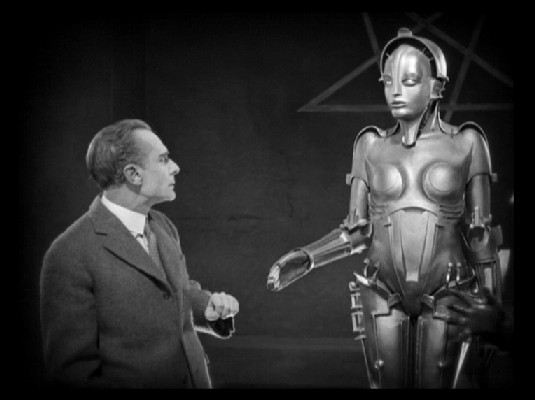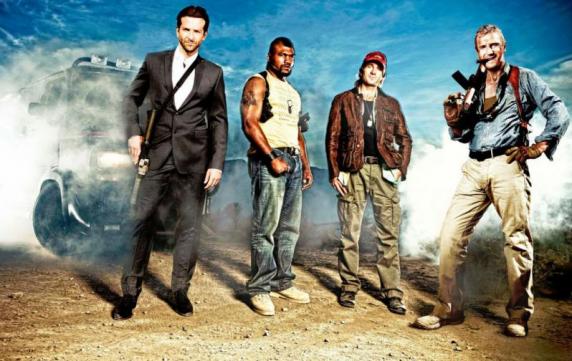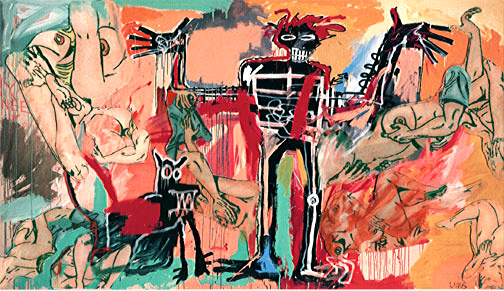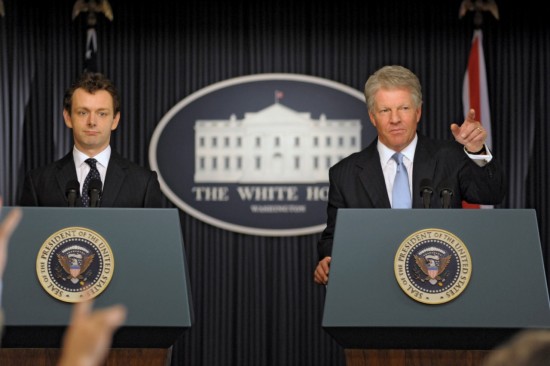
The Special Relationship, written by Peter Morgan and directed by Richard Loncraine, concludes Morgan's "Blair Trilogy" of films, and expands HBO's string of historical films that zoom in on pivotal periods in the lives of world leaders. Morgan's loose trilogy began with two films directed by Stephen Frears: The Deal, for British Television, and The Queen, which was released theatrically and for which Helen Mirren won the Oscar (among several other awards and nominations for the film). In all three movies, British Prime Minister Tony Blair was portrayed by Michael Sheen, who effectively captures Blair's charm, energy, and chilly, C-3PO-like precision.
The Special Relationship takes its title from the longstanding friendly diplomacy between the United States and Great Britain. The title takes on additional significance in terms of the personal and professional friendship between Tony Blair and Bill Clinton (played here by Dennis Quaid). Morgan and Loncraine's film selects particular passages from the mid-to-late 1990s, when Blair and Clinton served in the highest offices of their respective nations. Beginning with a visit by Blair to the US to gain campaign insights from Clinton's advisers, the story is told mostly from Blair's perspective, following the new PM through his first face-to-face meeting with Clinton, and on through a variety of crises - notably, the Lewinsky scandal and the decision to invade Kosovo.
There is an interesting transition that occurs in The Special Relationship that makes the film work as a character-driven story, and allows for a discomfitingly ironic coda. First we see the eager Blair, swallowing Clinton's political advice with admiring credulity. As the Lewinsky scandal erupts, and after Blair is mildly slighted once or twice by the president, the PM gains the courage to stand up to Clinton on the subject of Kosovo, eventually forcing the president to support an invasion. The Lewinsky and Kosovo crises gave Blair extremely high public approval ratings - on both sides of the Atlantic - and infused the PM with confidence and even a feeling of superiority. The irony of the film's coda, of course, lies in our knowledge of the extremely low approval ratings Blair faced after developing another presidential relationship - with Clinton's successor.
The film - and Sheen in particular - handles this transition with skillful aplomb, especially in the way it infuses historical incident into carefully-shaped scene-by-scene character dynamics that chart the parallel progress of both the people involved and the events being portrayed. This is done with extreme economy without feeling too much like a pile of dramatic shortcuts. Sheen's expert portrayal tracks Blair's gradual increase in savvy and tactical ability. As Clinton, Quaid is equally effective. The actor proves surprisingly capacious, adopting Clinton's moodiness and physicality in a way that goes well beyond impersonation.
Loncraine's strength is the way he steadily tells this complex story with such speed. In just 90 minutes, several years and a handful of major historical events have been effectively glossed, while keeping Blair's point of view at the forefront of the narrative. Loncraine evokes recognizable but sensitive performances out of a small, focused cast that includes Hope Davis (as Hillary Clinton), Helen McCrory (reprising her role as Cherie Blair from The Queen), and Mark Bazeley (as Alastair Campbell). This tight direction, Morgan's bullet of a script, and careful but naturalistic performances place The Special Relationship well above the average film released anywhere this past year.
The Special Relationship takes its title from the longstanding friendly diplomacy between the United States and Great Britain. The title takes on additional significance in terms of the personal and professional friendship between Tony Blair and Bill Clinton (played here by Dennis Quaid). Morgan and Loncraine's film selects particular passages from the mid-to-late 1990s, when Blair and Clinton served in the highest offices of their respective nations. Beginning with a visit by Blair to the US to gain campaign insights from Clinton's advisers, the story is told mostly from Blair's perspective, following the new PM through his first face-to-face meeting with Clinton, and on through a variety of crises - notably, the Lewinsky scandal and the decision to invade Kosovo.
There is an interesting transition that occurs in The Special Relationship that makes the film work as a character-driven story, and allows for a discomfitingly ironic coda. First we see the eager Blair, swallowing Clinton's political advice with admiring credulity. As the Lewinsky scandal erupts, and after Blair is mildly slighted once or twice by the president, the PM gains the courage to stand up to Clinton on the subject of Kosovo, eventually forcing the president to support an invasion. The Lewinsky and Kosovo crises gave Blair extremely high public approval ratings - on both sides of the Atlantic - and infused the PM with confidence and even a feeling of superiority. The irony of the film's coda, of course, lies in our knowledge of the extremely low approval ratings Blair faced after developing another presidential relationship - with Clinton's successor.
The film - and Sheen in particular - handles this transition with skillful aplomb, especially in the way it infuses historical incident into carefully-shaped scene-by-scene character dynamics that chart the parallel progress of both the people involved and the events being portrayed. This is done with extreme economy without feeling too much like a pile of dramatic shortcuts. Sheen's expert portrayal tracks Blair's gradual increase in savvy and tactical ability. As Clinton, Quaid is equally effective. The actor proves surprisingly capacious, adopting Clinton's moodiness and physicality in a way that goes well beyond impersonation.
Loncraine's strength is the way he steadily tells this complex story with such speed. In just 90 minutes, several years and a handful of major historical events have been effectively glossed, while keeping Blair's point of view at the forefront of the narrative. Loncraine evokes recognizable but sensitive performances out of a small, focused cast that includes Hope Davis (as Hillary Clinton), Helen McCrory (reprising her role as Cherie Blair from The Queen), and Mark Bazeley (as Alastair Campbell). This tight direction, Morgan's bullet of a script, and careful but naturalistic performances place The Special Relationship well above the average film released anywhere this past year.
